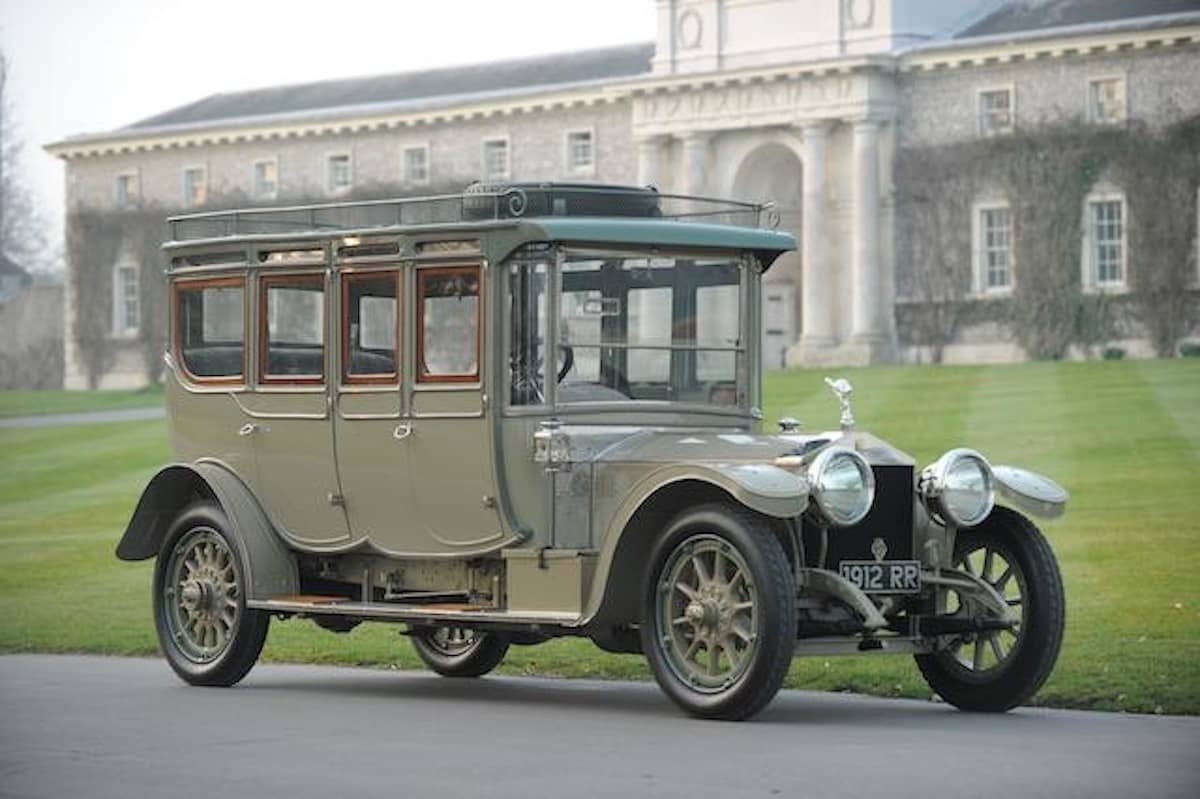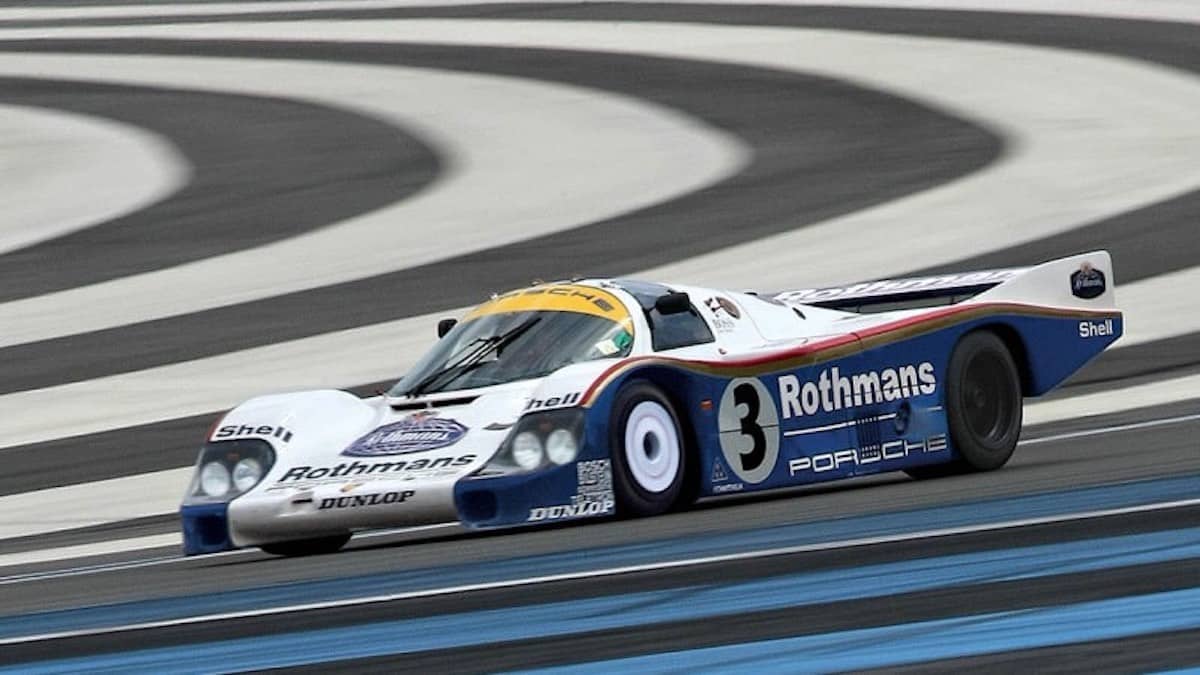As any classic car enthusiast probably knows, the highest price ever recorded at a public auction - $38.1 million - was offered for a genuine 1962 Ferrari 250 GTO. Another impressive milestone was reached in December 2016, when a LaFerrari became the most expensive car sold at auction in the 21st century. But you'll be surprised, because now other heights have been reached. We invite you to take a look at which car models made it to the top of the most expensive car category of their decade!
Worth to mention that this list reflects sales, officially announced in public auctions. However, there are some rumors about Ferraris and other classic and rare exotic cars, privately sold for over $50 million. As public auctions remain the best indicator, let’s take a closer look at the most expensive cars by each decade – from early 20th century till nowadays, ever sold at auctions. Kindly note: the information in this publication was gathered as of April 4th, 2023.
1900s
1904 Rolls-Royce 10 hp Two-Seater
- USD 7,254,290
- December, 2007, London, United Kingdom
- Auctioned by Bonhams
This is the oldest known surviving Rolls-Royce in the World. It came off test in November 1904 and was the third car to wear theRolls-Royce radiator and the fourth car to carry manufacturer's name. A true motoring icon, which was displayed at the 1904 Paris Salon and 1905 Olympia Motor Exhibition.
1910s
1912 Rolls-Royce 40/50hp Double Pullman Limousine 'The Corgi'
- USD 7,343,000
- 2012, Goodwood, United Kingdom
- Auctioned by Bonhams
It has survived more than a century in its original configuration and is the only example of this coachwork without a division window, delivered by Rolls-Royce and Barker & Co. in early 1912. Rolls-Royce 40/50hp appealed to owners who made driving by themselves. That's the reason why the driver's compartment was as finely trimmed and equipped as the rear, a big contrast to many similarly-bodied automobiles of the period.
1920s
1928 Mercedes-Benz 680S Torpedo Roadster
- USD 8,226,400
- August, 2013, Monterey, United States
- Auctioned by RM Auctions
Exclusive Mercedes-Benz 680S Torpedo Roadster born in an era when the Ford Model T was selling one million units per year on average. It was high fashion and fine engineering example, displayed at the 1929 New York Auto Salon. Only three short-windshield examples were built and it is the only one known survivor.
1930s
1939 Alfa Romeo 8C 2900B Lungo Spider
- USD 19,800,000
- August, 2016, Monterey United States
- Auctioned by RM Sotheby's
Alfa Romeo 8C 2900B was way ahead of the other sports cars in the 1930s. Actually, it was not a mere sports car, but the most advanced, modern, and ultimate Italian two-seater covertible of its generation that money could buy. It is believed that only 12 are Touring Spiders bodies, who can be justifiably referred to as 'Italy’s version of the Bugatti Atlantic'.
1940s
1948 Alfa Romeo 6C 2500 Competizione
- USD 4,840,000
- August, 2013 Pebble Beach, United States
- Auctioned by Gooding & Company
6C 2500 Competizione was the first post-war Alfa Romeo competition model and the first automobile designed and built by Alfa Corse – Alfa Romeo’s racing and technical staff. This special car is one of only two built and the only example extant. Its' unique and intriguing design is not the only fascinating side - it made four consecutive Mille Miglia appearances 1948-51 and completed three Targa Florio runs 1949-51.
1950s
1955 Mercedes-Benz 300 SLR Uhlenhaut Coupe
- USD 142,000,000
- May 5, 2022, Stuttgart, Germany
- Auctioned by RM Sotheby's
Out of the nine 300 SLR rolling chassis created, two (dubbed the "Uhlenhaut coupé") were transformed into 300 SLR/300 SL hybrids. These road-legal racers featured coupé styling, gull-wing doors, and a size that fell between the two original models.
After the Le Mans disaster, Mercedes-Benz discontinued its racing program, putting the hybrid project on hold. Rudolf Uhlenhaut, the company's design chief and the mind behind the 300 SLR racer and the hybrids, claimed one of the remaining prototypes as his vehicle. With a top speed nearing 290 km/h (180 mph), the Uhlenhaut Coupé was the fastest road car of its time.
A 1955 Mercedes-Benz 300 SLR Uhlenhaut Coupé broke records as the most expensive car ever sold when it was auctioned for €135 million. Previously owned by Mercedes-Benz, the car was sold by RM Sotheby's to an unidentified collector at the Mercedes-Benz Museum on May 5, 2022.
1960s
1962 Ferrari 250 GTO by Scaglietti
- USD 48,405,000
- August 26, 2018, Monterey, California, United States
- Auctioned by RM Sotheby's
This vehicle is the third production GTO ever built, with its factory assembly completed in late April 1962. It was the first GTO to showcase Series I coachwork features, such as a small radiator intake, narrow brake ducts, hood fasteners, and sail-panel vents. Scaglietti's design also included a bolted-on rear spoiler and turn signal lamps beneath the headlights. Equipped with a tipo 168/62 competizione V-12, the GTO was painted in rosso cina, while the interior was adorned with traditional blue cloth upholstery.
In early May, renowned driver Phil Hill operated this Ferrari as SEFAC Ferrari's official practice car for the upcoming Targa Florio. By that time, Hill had already solidified his position as a significant figure in international American motor racing and the Ferrari factory. He had won Le Mans multiple times and was the first American Formula 1 World Champion and, without a doubt, one of the world's most skilled and respected racers. The fact that Hill drove 3413 is a unique privilege few cars can claim.
A few days after the practice, the GTO was officially sold to Mrs. Arnalda Colombo on behalf of her husband, renowned Italian privateer Edoardo Lualdi-Gabardi. Lualdi-Gabardi was one of the most charismatic and successful privateer drivers of his time and a personal friend of Enzo Ferrari, frequently receiving the finest, exceptional vehicles from the factory.
1970s
1970 Porsche 917K
- USD 14,080,000
- August 19, 2017, Pebble Beach, California, USA
- Auctioned by Gooding & Company
The 917K evolved from the original 1969 model. The initial 917s demonstrated that their aerodynamics made them almost impossible to handle at high speeds. After the 1969 championship season, John Wyer requested a 3-day test session at Austria's Österreichring circuit. Porsche's technical team arrived prepared to make significant adjustments to the coupé's bodywork and brought the Can-Am 917PA Spyder for comparison. The drivers present immediately favored the PA, leading the JW Automotive and Porsche engineers to develop a more upswept tail similar to the 917PA. The JW team had experienced similar high-speed handling issues with the early Ford GT40 models. Using gaffer tape and aluminum sheets, a new short tail was created at the racetrack, which Porsche quickly turned into a production design. The 917K (Kurzheck) was unveiled at the 1970 24 Hours of Daytona season opener, and its improved high-speed stability made it the standard configuration for all races except Le Mans, the Nürburgring 1000km, and the Targa Florio. JW Automotive and Porsche Salzburg raced this car in every event of the 1970 season, except for the Targa Florio and the Nürburgring 1000 km. The more compact, agile, and generally better-suited 908/03s were used in those races, though privateers employed the 917K at the Nürburgring 1000 km, and Vic Elford completed a lap of the 44-mile Targa Florio course in the 917K at Ferdinand Piëch's request. The 917K won 7 out of the 10 races it participated in. Later in the 1970 season, the 4.5-liter flat-12 engine was expanded to 4.9 liters and then to 5 liters.
1980s
1982 Porsche 956
- USD 10,120,000
- August, 2015, Pebble Beach, United States
- Auctioned by Gooding & Company
This Porsche 956 is well-known for its victory at the prestigious 24 Hours of Le Mans in 1983. It is one of only ten cars and the single most successful Porsche 956.
1990s
1995 McLaren F1 Chassis 029
- USD 20,465,000
- August 14, 2021, Pebble Beach, California, USA
- Auctioned by Gooding & Company
Chassis 029, the 25th McLaren F1 production car, was one of 25 units completed in 1994. This distinctive vehicle featured Creighton Brown paint, a brown driver's seat with a tan leather insert, and matching tan leather throughout. The dashboard was covered in light brown Alcantara suede, and the carpet was brown.
The unique exterior colour was named in honour of Creighton Brown, McLaren's Commercial Director, during the F1 road car program's inception. Brown started his motor racing career in the 1970s, working as a driver, constructor, and entrant before being invited to manage the ICI-backed Chevron Formula 2 team. This led to his collaboration with Project Four Racing's Ron Dennis.
In 1978, Brown joined Dennis at Project Four, and by 1981, they assumed control of McLaren. Under Brown's leadership, the team secured seven Constructors' and eight Drivers' World Championship titles.
Creighton Brown, Gordon Murray, Ron Dennis, and Mansour Ojjeh, played a crucial role in creating McLaren Cars, which resulted in the innovative three-seater F1. Besides his work with McLaren, Brown held various management positions and was a prosperous pig farmer. His Camborough Pigs business developed a specific strain that was marketed globally, especially in Brazil, where he eventually retired after leaving McLaren in 1992.
Chassis 029 was initially delivered to Japan, but the first owner barely drove the car. In 2001, it was offered for sale by Art Sports, still displaying minimal mileage. The car did not find a buyer and was returned to the original owner.
The one-of-a-kind Creighton Brown F1 left Japan in 2013 when Euro-Classics facilitated its sale to a US collector who stored it away. In August 2021, Gooding & Company auctioned 029 at their Pebble Beach event, showing a mere 240 miles on the odometer since new.
2000s
2001 Ferrari F2001
- USD 7,504,000
- November 16, 2017, New York City, New York, USA
- Auctioned by Sotheby's
The Ferrari F2001 was an exceptionally successful Formula One vehicle that the Ferrari team utilized during the 2001 Formula One season. Rory Byrne, Ignazio Lunetta, Aldo Costa, Marco Fainello, Nikolas Tombazis, and James Allison designed the chassis, while Ross Brawn, the team's Technical Director, played a crucial role in overseeing the car's production. Paolo Martinelli and Giles Simon led the engine design and operations. An updated version called the F2001B was employed for the first two races of 2002 before being superseded by the F2002.
Ferrari displayed 'Marlboro' logos on the car, except during the French, British, and United States Grand Prix events.
2010s
2017 LaFerrari Aperta
- USD 11,035,000
- September, 2017, Maranello, Emilia-Romagna, Italy
- Auctioned by RM Sotheby's
The LaFerrari Aperta, an open-top variant of the LaFerrari, initially had 200 cars sold, with an additional nine set aside for Ferrari's 70th Anniversary celebrations. Another unit was subsequently auctioned off. The Aperta features a detachable carbon-fiber hardtop and a removable canvas soft top. Modifications include improved control electronics for the powertrain, repositioned radiators for directing airflow along the underbody rather than over the hood, an extended front air dam for increased downforce, an L-shaped flap on each windscreen pillar's upper corner to alleviate compression at the rear of the cabin without a roof, altered door opening angles with distinct wheel arches, and a novel carbon-fibre insert enabling the doors to rotate.
The LaFerrari Aperta debuted at the 2016 Paris Motor Show. In line with previous open-top Ferrari models, it adopts the Aperta label to signify its detachable roof. Ferrari reports that all 200 units had been pre-sold to customers through invitation.
---
Discover your dream car within our Car Categories, or explore our Classic Passion Shop to uncover thrilling items from our associates!




















